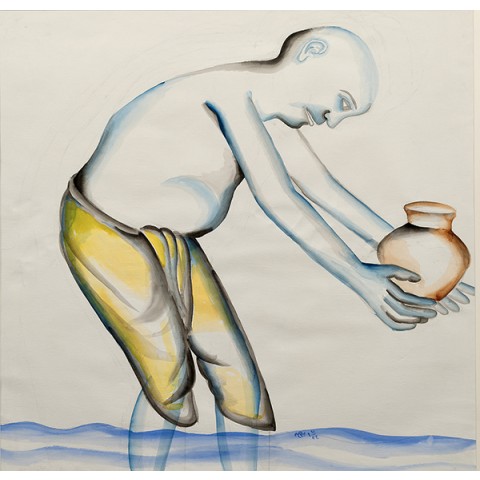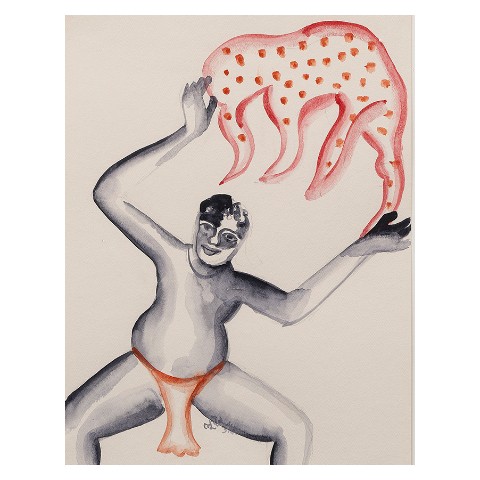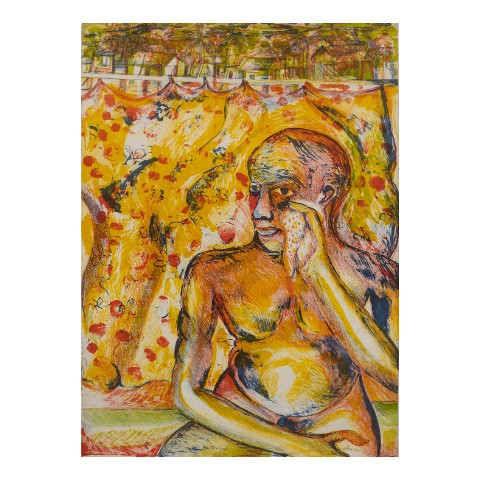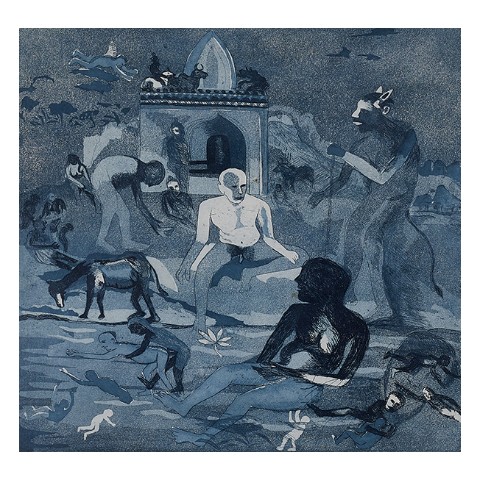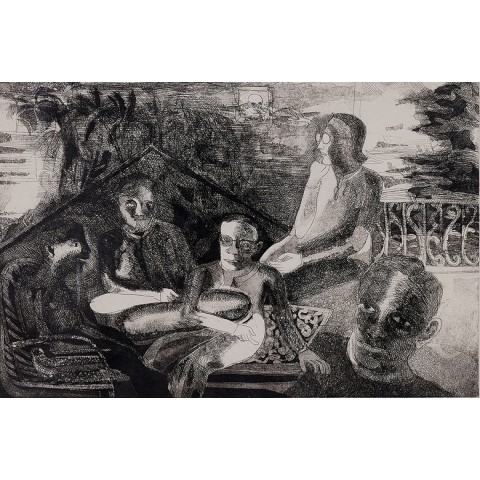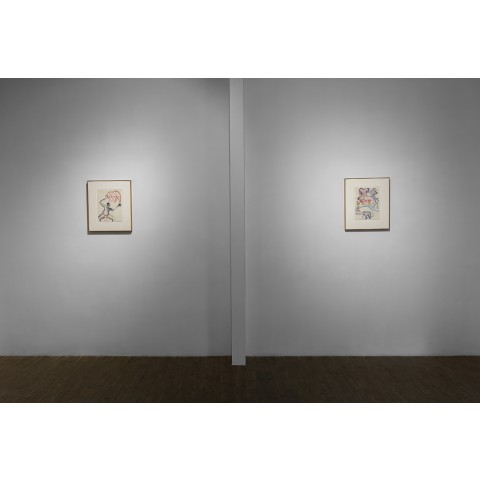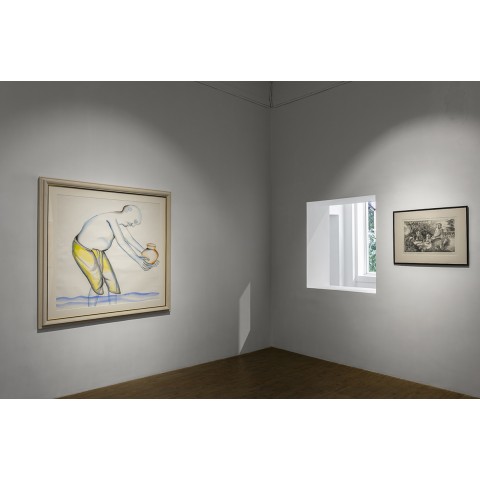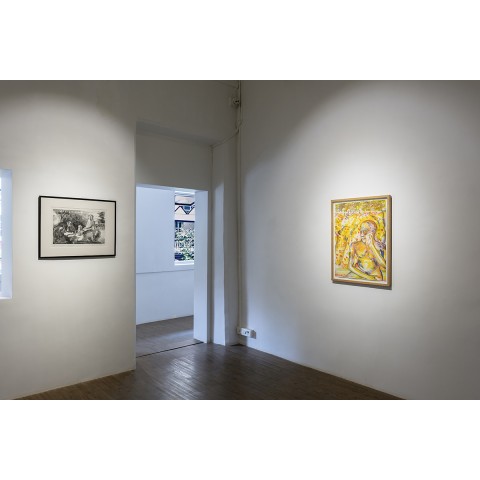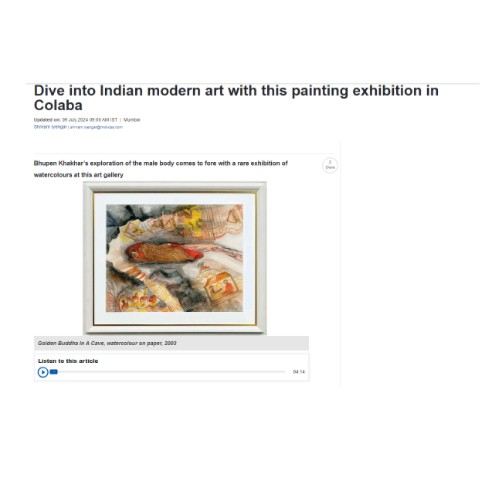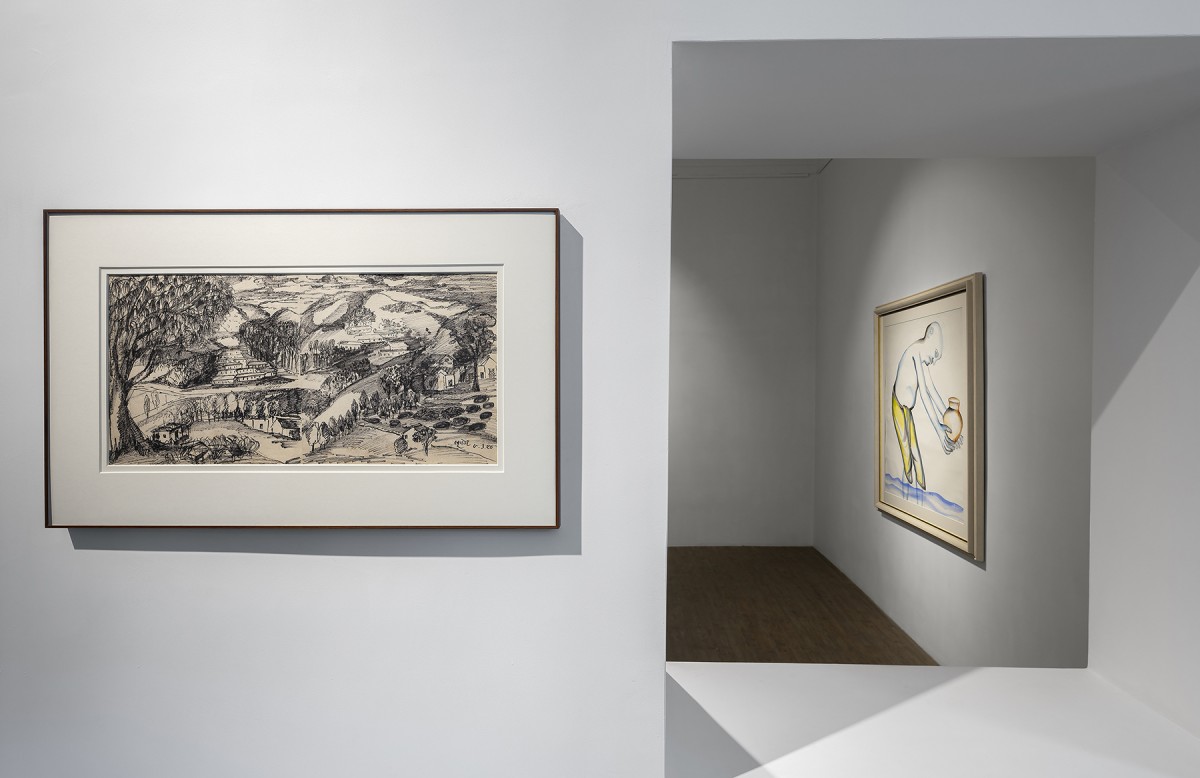
BHUPEN KHAKHAR: BODY, SHRINE
July 11 - August 17 , 2024
Bhupen Khakhar’s art is a tragicomedy of
protuberant bellies, saggy flesh, and the thin-fat phenotype characteristic of
Indian males, the polar opposite of imagery served up on the
lifestyle-and-desire machine called Instagram so popular at the current moment.
One painting in the present exhibition, titled Handsome Twins of Tatanagar...
depicts endearingly jovial men whose grins reveal horribly misshapen teeth, an
effect barely softened by the black-and-white filter applied to one of the
brothers. Another picture has a bespectacled man in a langot playing
pehlwan, triumphantly holding aloft a pseudo-elephant, ambiguously shaped but
clearly buoyant rather than burdensome. More somber compositions show a
shaven-headed man about to pour the ashes of a family member into a river, and
a naked figure appearing to wipe away a tear with a speckled handkerchief.
People who look like this are not
conventionally placed in narratives of passion but that is where Khakhar
frequently located them. Beginning in the 1980s, the artist explored his
sexuality with steadily increasing candour. An etching in the show depicts a
meeting of friends in which Khakhar’s alter-ego clutches a phallic bolster. A
print from 1992 titled In the River Jumna is more explicit in its
depiction of sexual acts taking place in the river and on the banks in front of
a Shiva temple with a prominent lingam in its sanctum.
The temple in this case has a sexually
symbolic purpose but Khakhar’s fascination with shrines was constituted by many
dimensions. This fascination was evident from his earliest days as an artist,
when he produced brightly coloured collage-paintings of temples that befuddled
critics and introduced a singularly Indian pop aesthetic into the history of
art. In his later autobiographical work, he began portraying pilgrimage centres
as sites where traditional roles and strictures could be bypassed and where profane
desire could be expressed within the open-ended framework of Hindu sacrality.
Occasionally, and particularly in the last decade of his life, shrines came to
be places that offered a kind of solace. This is the mood of a watercolour in
which a domed structure, perhaps a small mosque or dargah, stands peacefully
among a cluster of trees.
Khakhar’s last paintings relate to a visit he
made to Sri Lanka with a group of fellow artists in 2003. Although he followed
through on his commitment to be part of that trip, he was too ill to undertake
physically taxing activities such as climbing the ancient rock fortress of
Sigiriya. Instead, he brought mementos from Sri Lankan vendors at different
sites and combined such imagery with his imagination to produce innovative
compositions once back home. One of the paintings from his Sri Lankan series features
in Body / Shrine, depicting a statue of the reclining Buddha at its
centre, surrounded by vignettes of Buddhist ritual and learning. Steep steps,
overhanging rocks and flowing curved lines make for a complex painting that
oscillates between restfulness and agitation. It is difficult not to infer that
it reflects the artist’s state of mind in his final days.
Text by Girish
Shahane
